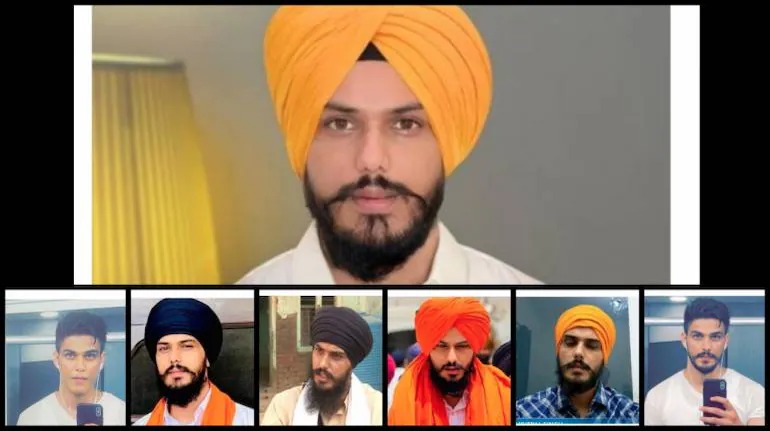In his latest video, Singh, a preacher calling for a Sikh homeland known as Khalistan, says he’ll surrender at a time of his own choosing.
Amritpal Singh is a mechanical engineer, businessman, Sikh preacher and now — a fugitive.
The 30-year-old rose to stardom on social media over the last year or so with his speeches calling for a separate homeland, known as Khalistan, for Sikhs — who make up the majority of the population in the Indian state of Punjab.
Singh’s separatist ideas have made the authorities nervous because India has had a violent history of Sikh separatism. For more than two weeks now, thousands of police personnel have chased Singh. TV channels have reported on Singh’s whereabouts, often blurringthe lines between facts and rumors. They accessed CCTV footage from street corners, which they claimed showed that he first rode an SUV, moved to a smaller car and finally, fled on a motorcycle.
Even as the police were closing in on him, Singh reportedly stopped at a gurudwara — a Sikh religious place — for food and a change of clothes.
Singh, himself, released a video saying that he will be the one who chooses when to surrender. But he has not specified when or how he will do so.
The nation remains transfixed, though opinions about Singh and his campaign are mixed.
“If you talk to Punjabis here, it’s like, ‘That’s fine, he should have been arrested,’” said Sangeet Toor, an editor of a Punjabi magazine. “But for Punjabis abroad, he has become an icon. And this incident has made him a bigger icon.”
Toor writes about farmers’ rights and lived in the United States for many years before returning to India.
Toor said that Sikhs living in India generally do not support the idea of a separate nation. Many Sikhs living in India are old enough to remember what happened when Sikh separatist militants clashed with security forces in the 1970s and 1980s, he said.
In those days, the calls for a separate Sikh nation were strong. Not only did the Indian army take tanks into Sikhism’s holiest shrine, the Golden Temple, but it also killed a charismatic Sikh separatist leader — Jarnail Singh Bhindranwale — who was holed up in the temple. Singh styles himself on Bhindranwale.
In retaliation for the storming of the temple, then-Prime Minister Indira Gandhi was assassinated by her Sikh bodyguards. Afterward, the nation saw large-scale violence against Sikhs.
Thousands were killed, while many were maimed and tortured. Those who remember this violence are weary of separatism, according to Toor. But the young people of Punjab, who did not witness those days, are lured by the idea of a Sikh nation, Toor said.
One of the biggest issues that Singh raised is that of drug abuse in Punjab, which affects millions of youth in the state. Singhhasblamed the authorities for not doing enough to control it.
“Do you see the drug genocide epidemic here?” Singh said on local media days before he fled. “Who is controlling the drugs? Who is responsible [for ending] this epidemic? Who is not taking any action?”
If he had a separate country, Singh said, he would do better.
Ashutosh Kumar, who teaches political science at Punjab University, echoed Toor in saying that such an ideology is not widespread in Punjab.
“Not many people believe that a separate country is the answer,” Kumar said.
Moreover, Punjab’s problems have deeper economic roots. Punjab is one of the largest producers of food grains in India. But, Kumar added, the agriculture sector is in a deep crisis.
“The soil quality has gone down, the water table has gone down, farmers are debt-ridden, industries are not coming, investment is not taking place in Punjab,” he said. “So, youth [are] completely disillusioned.”
That’s why a separate country may be enticing to some, Toor said: “For any inflammatory ideas, you are going to get a lot of people behind you, especially when there is illiteracy and no opportunities for anyone to look forward to.”
Published in The World
Published on April 5, 2023
Link: Sikh separatist still on the run in India | The World from PRX


